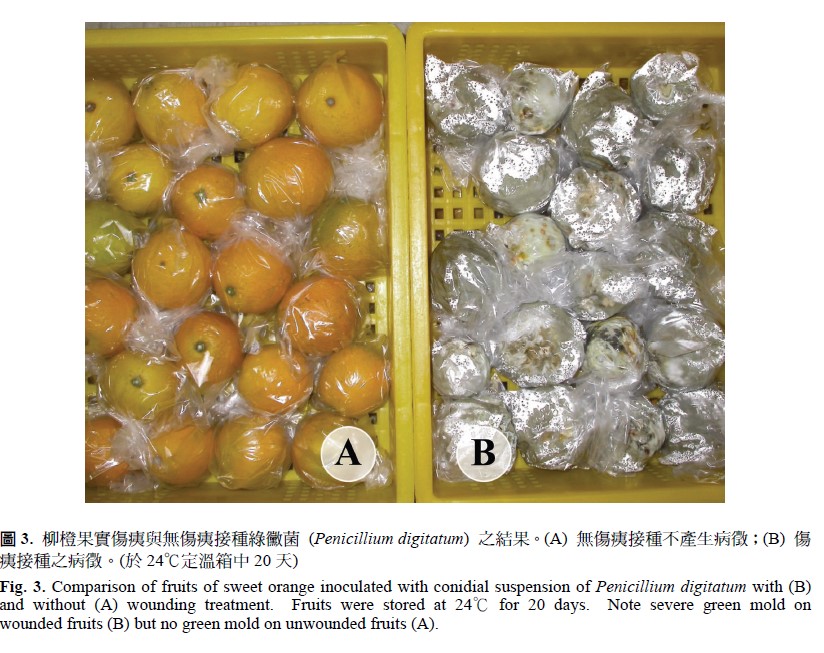All issues

Author:Jyh-Nong Tsai, Pao-Jen Ann*, and Hsiu-Fang Cheng
Abstract:
Fruit rot or green mold caused by Penicillium digitatum is the most common postharvest disease of sweet orange (Citrus sinensis cv. ‘Liu-cheng’) in Taiwan. A study was conducted to determine effect of temperature on growth of the pathogen and development of fruit rot of sweet orange and effect of fungicide treatment on control of this postharvest disease. Results showed that the minimum, optimum and maximum temperature for mycelial growth of P. digitatum on PDA was 8, 24, and 36℃, respectively. The pathogen infects orange fruits through wounds and incidence of fruit rot was affected by storage temperatures, high incidence of fruit rot at the storage temperature of 24℃ but no fruit rot at the storage temperature above 32℃ or below 12℃. Symptoms of green mold appeared on inoculated fruits after storing at 24℃ for 2–3 days. Among the five fungicides [Iminoctadine triacetate (ai 125 ppm), Thiabendazole (ai 836 ppm), 2,4-Dichloro phenoxcyaceticacid (2,4-D) (25 ppm), sodium hypochloride (2000 ppm), and chloride dioxide (100 ppm)] tested, iminoctadine triacetate at 125 ppm was the most effective fungicide, which completely suppressed mycelial growth of P. digitatum on PDA and inhibited conidial germination in 5% CV-8 juice. Treatment of orange fruits with iminoctadine triacetate at 125 ppm before or after inoculation of P. digitatum also completely prevented the development of fruit rot for 9 days. However, iminoctadine triacetate was ineffective if the chemical was applied after inoculation of P. digitatum for 16 hours or longer. The fungicide thiabendazole at 836 ppm was effective in reducing spore germination of P. digitatum but was ineffective in reducing incidence of fruit rot. This study suggests that prevention of fruit injury, treatment of orange fruits with iminoctadine triacetate, and storage of orange fruits under cool temperature may be necessary for effective control of green mold of sweet orange caused by P. digitatum.
Key words:Sweet orange, Citrus sinensis, Green mold, Penicillium digitatum, Postharvest disease, Disease control, Iminoctadine triacetate
Download:![]() PDF Links
PDF Links
- 1. Development of Tractor-Mounted Seedling Transplanter for Sweet Potato
- 2. Synergistic Effect of Additional Gas on the Toxicity of Phosphine to Sitophilus oryzae and Sitophilus zeamais (Coleoptera: Dryophthoridae)
- 3. Effects of Temperature and Solar Radiation on Growth Traits and Plant Elements in Purple Leafy Sweet Potato
 Submit your manuscript
Submit your manuscript
 Guide for authors
Guide for authors